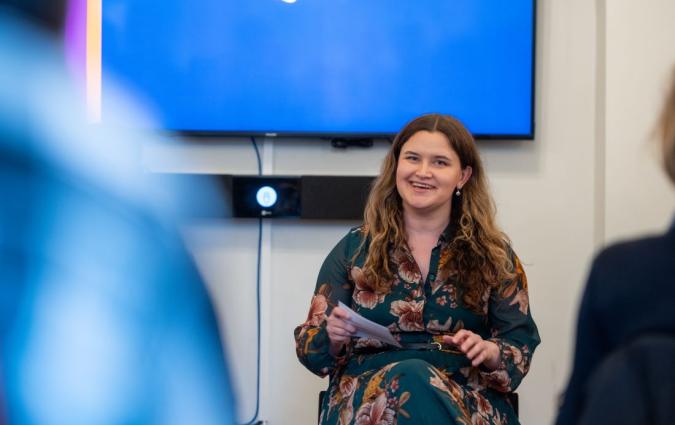In this piece
Change-Centric Journalism: reframing the value proposition of news for the AI age
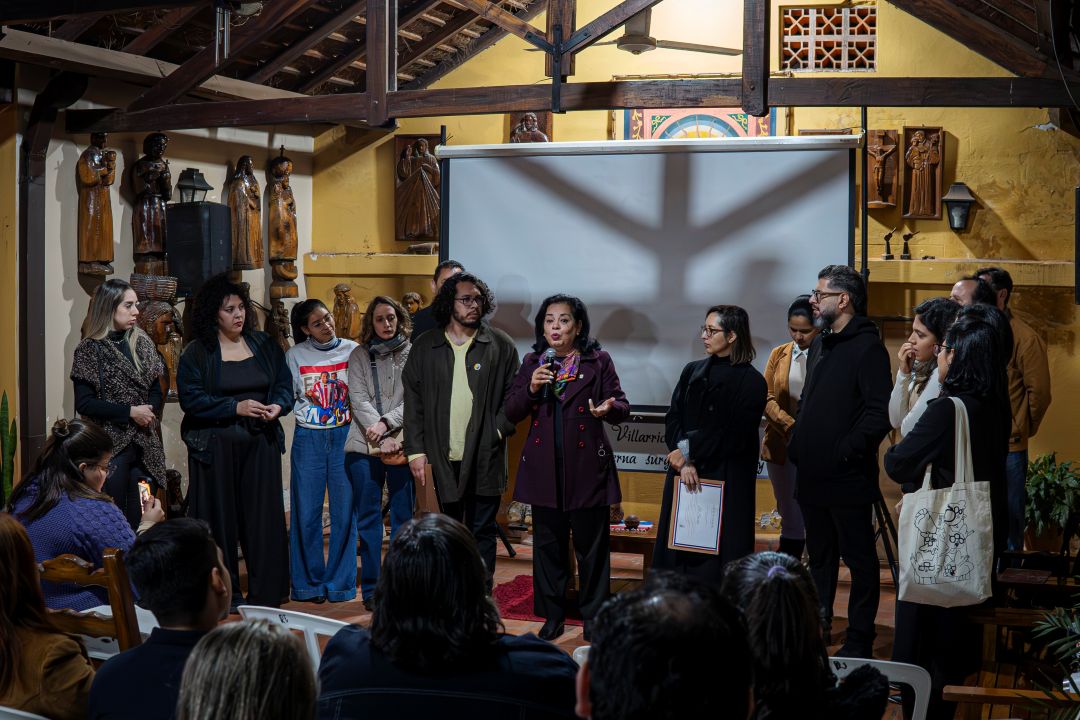
Neighbours present the editorial staff of El Surtidor with a certificate of appreciation for their reporting, which found evidence of malpractice at a crypto farm. Credit: El Surtidor
In this piece
Change-Centric vs content-centric journalism | Change as mission: forged in the Global South | La Memetodología: How El Surtidor designs impact | An opportunity to restore journalism’s value beyond the algorithmsThe existential crisis journalism faces today demands an answer far more substantial than the one most commonly given: that we deserve to exist because what we do is inherently valuable.
It is a mindset that may be prolonging the crisis of relevance and trust that newsrooms are dealing with. Because it keeps our focus on “content” – on producing more of it, and on adapting its format to meet to latest trends.
For proof of this, look no further than the Institute’s own Trends and Predictions report, which charts both the decline in referrals, shifts in audience format preferences, and media leaders’ commitment to investing in news personalisation, or more video, or new audio initiatives.
All of these efforts are commendable, but I believe they will fall short if we don’t adopt a sharper vision of purpose.
My proposal is that we embrace one of the most enduring reasons journalists keep going in the face of difficulties: the desire to serve and facilitate change.
Change-Centric vs content-centric journalism
I have created a framework, outlining the principles and practices that distinguish a content-driven model from a brand of journalism that has a strong sense of mission.
I call it Change-Centric Journalism: an approach that adds a layer of intentionality to our work.
It is grounded in the pursuit of impact that improves the lives of people through care-based reporting and purposeful engagement with them. Ultimately, it builds collective experiences around information that revitalises our public life, the foundation of democracies.
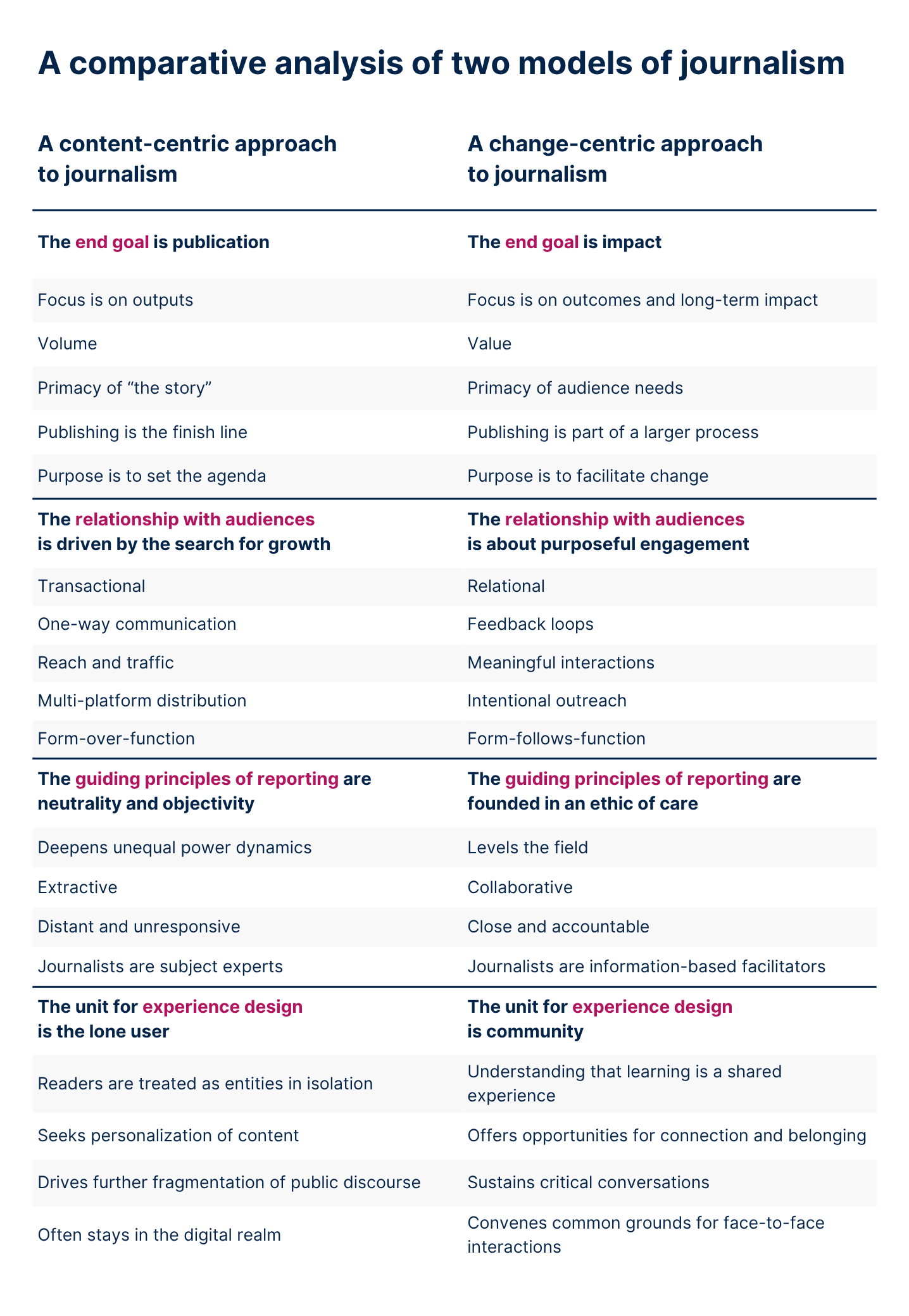
Change as mission: forged in the Global South
This approach is informed by both media research and the contributions of practitioners in the impact space. Solutions Journalism is another point of inspiration. But the primary foundation is my own experience over the past decade as co-founder and editorial director of El Surtidor, a digital news outlet from Paraguay.
The proposition has a strong perspective from the Global South, where journalism has played a crucial role in democratisation, social justice and development.
This is not just a theoretical framework; there is a legacy that precedes it, and I have found continuities in the present in some of the most cutting-edge digital outlets.
What sets these newsrooms apart is a deep commitment to and active involvement in seeing individuals, communities, and societies thrive.
In Change-Centric Journalism, publication is only the start, not the end goal. News outlets are deliberate about the positive impact they want to make with journalism, be it fighting stereotypes, improving life in the city, bringing wrongdoers to justice or revitalising civic action.
La Memetodología: How El Surtidor designs impact
In my newsroom in Paraguay, we have experimented with a set of concepts and tools that increase the prospects of impact considerably when applied in combination. These form what we call La Memetodología (Memethodology). It is a key part of how we deliver on our tagline – “information for action” – in the digital era.
La Memetodología borrows from agile design, product thinking and other frameworks. It also takes inspiration from internet meme theory, especially AX Mina’s work about how memes can drive social movements.
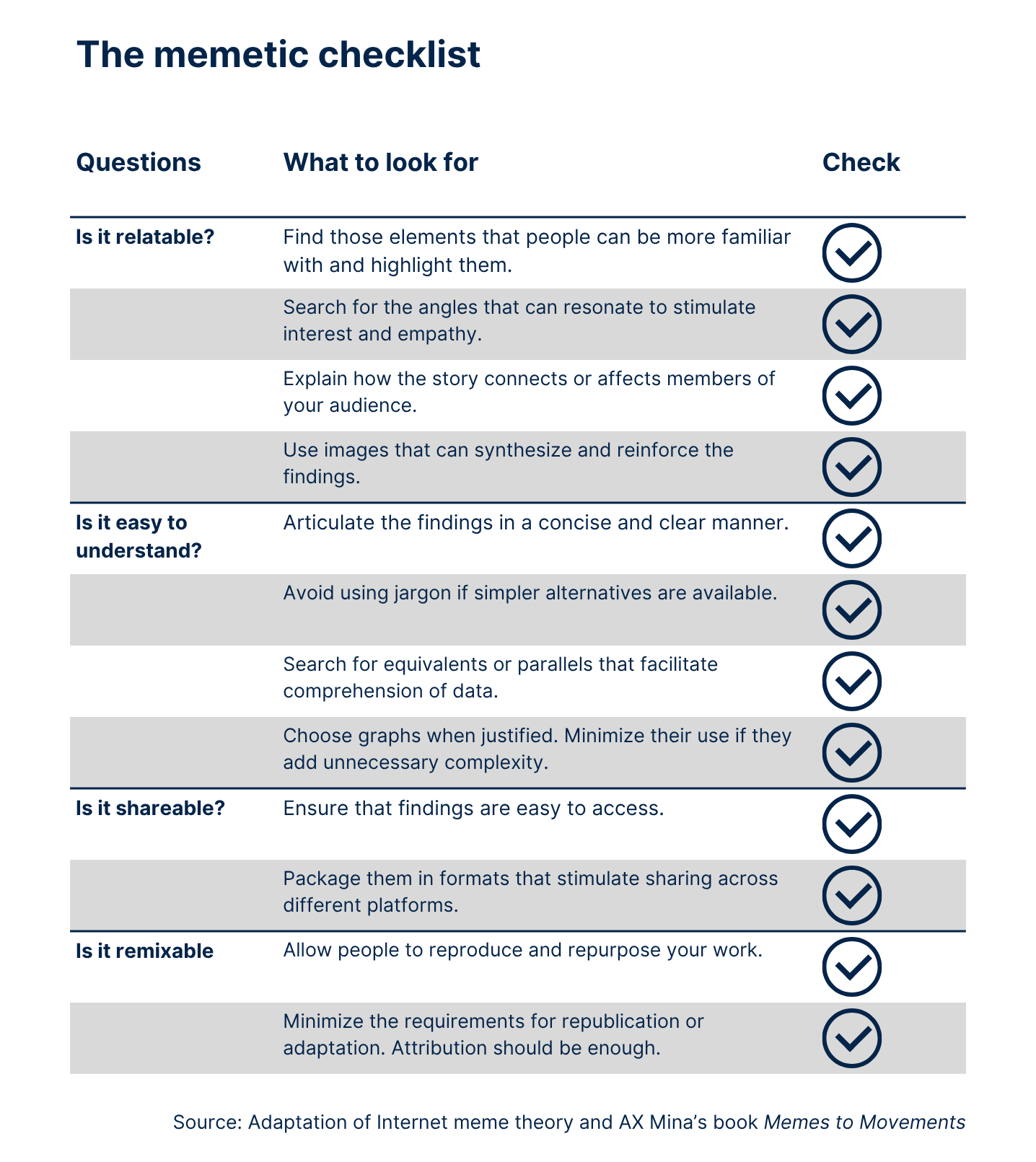
One of the tools we use is a set of prompt questions that guide the conversation of the newsroom and facilitate the impact design of a story.
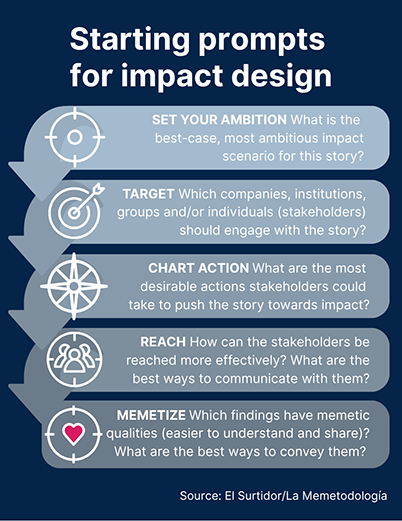
The answers help to draw an impact map or impact journey, another useful tool. It starts with the findings that reporters have uncovered and ends with a large vision of change.
The impact map also identifies the key stakeholders who should ideally engage with the findings and the expected outcomes from that interaction. A database with contact details of people facilitates the outreach work. It includes profiles from academia, media, civil society, advocacy groups, the private sector and public officials.
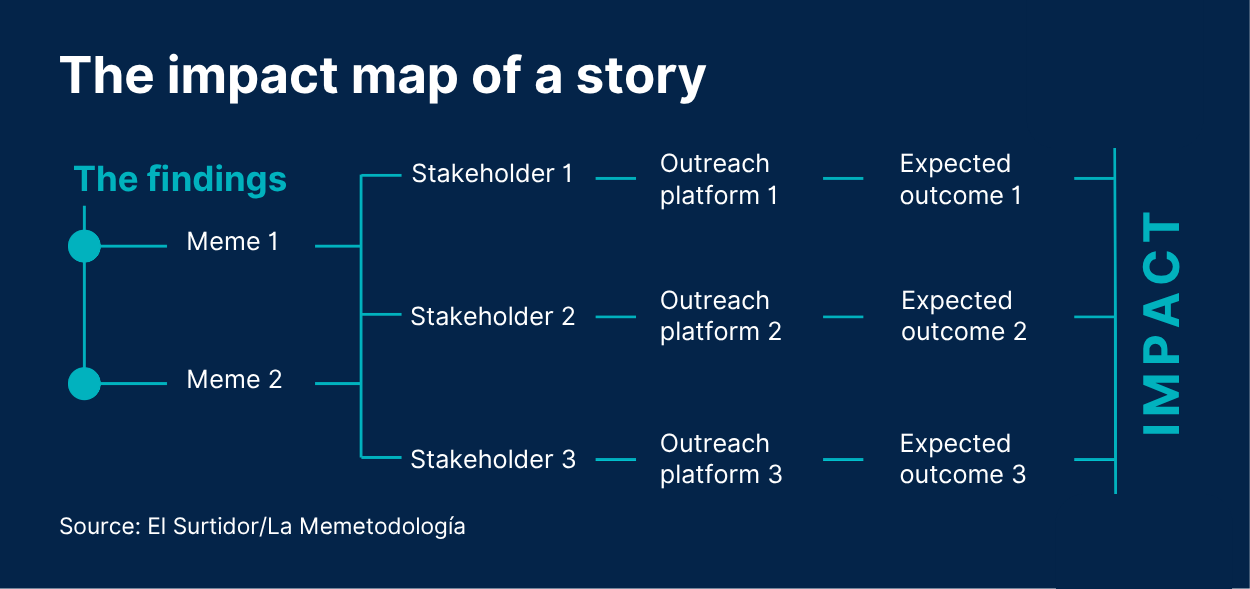
Our impact tracker helps to document these outcomes. They are short-to-medium term forms of impact, such as awareness, amplification and endorsement or grassroots organising.
More systemic forms of impact often involve decision-makers. Impacts should show an important degree of change from the original point of departure of a story. Systemic impact signals shifts in the layers of power, such as official investigative commissions, accountability hearings, policy reform, new normative frameworks, and so on.
There are no tricks or shortcuts: impact work requires planning, processes and tools. AI technologies can simplify some aspects of this work, but beware of the expectation of automation. In the words of Lindsay Green-Barber, a global leader in impact strategy and the founder and principal of Impact Architects, newsrooms that are good at this do not just build an impact tracker and expect it to solve all their problems; they have a culture of impact, and that culture starts with a clear mission.
An opportunity to restore journalism’s value beyond the algorithms
Another key dimension of a Change-Centric Journalism is how news organisations interact with audiences. Purposeful engagement, not audience growth, is what defines these interactions.
The aim is not to talk to everyone (which is the same as talking to no one). Instead, the focus is on building relationships with specific groups to serve them well.
With this type of engagement, newsrooms can grow a loyal support base, build better news products and increase the impact of their work while fulfilling emerging audience demands such as recognition, acceptance and dialogue.
In a similar vein, when it comes to reporting, care, just as much as rigour and fairness, is what restores trust with people. Catarina Carvalho from Portugal’s Mensagem de Lisboa perfectly sums up the spirit of this approach: “You see yourself not only as a journalist, but as a neighbour.”
In the case of Izabela Moi’s Agencia Mural in Brazil, its mission of doing local journalism for people living in underserved neighbourhoods of São Paulo is realised by having a staff 100% made up of residents from those areas.
In Change-Centric Journalism, news outlets can go beyond what communication researchers describe as the "instrumental role" of communication (the role of “informing the public”) to offer experiences that build what the late, great foundational media theorist James W. Carey described as “common culture”.
There is a reason to do this. When Brazilian journalist Natalia Viana was studying the disinformation tactics of President Bolsonaro, she found that fake news allows people to participate in democracy. She warned: networks of disinformation stimulate involvement while journalism still works in unilateral ways.
I believe the fragmentation and polarisation of the digital sphere will not be solved with more personalised content, but by personal connection. The concept of “information grounds” illustrates a path forward.
These are valued spaces where people meet, release tensions, network and construct the meaning of information. A coffee shop can be an information ground, as researchers Rohman and Pang showed in a 2015 study about conflict resolution in Indonesia. I suggest that newsrooms could fit into the definition in countless ways.
Some have been experimenting with giving people chances to interact face-to-face through coffee shops, houses of journalism (like Publix in Berlin), storytelling events, or mingas informativas (collaborative LatAm activism networks). There are social and even financial benefits to be gained in convening people beyond the algorithms.
The full project below describes in detail how these practices and values are not only better suited to the challenges of our time – from AI and disinformation to populist attacks on journalism – but also offer a more sustainable and purposeful model for the future.
To learn more about Change Centric Journalism, you can access the full project PDFs in English or Spanish below, or visit Jazmín's project website to get in touch and learn about future meetups and news.



